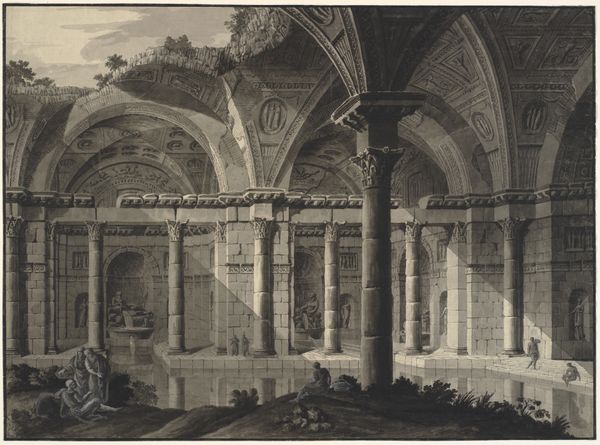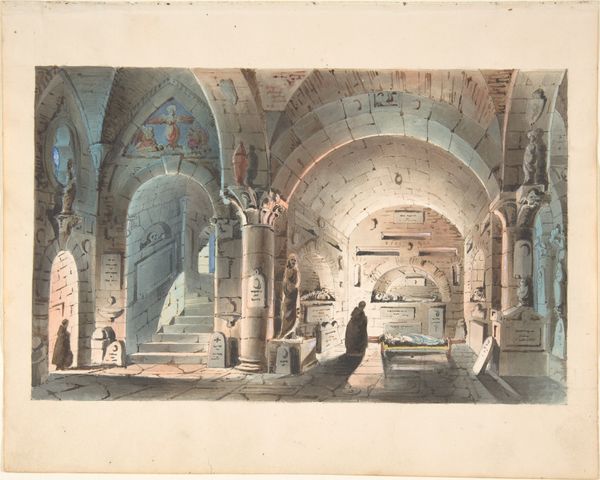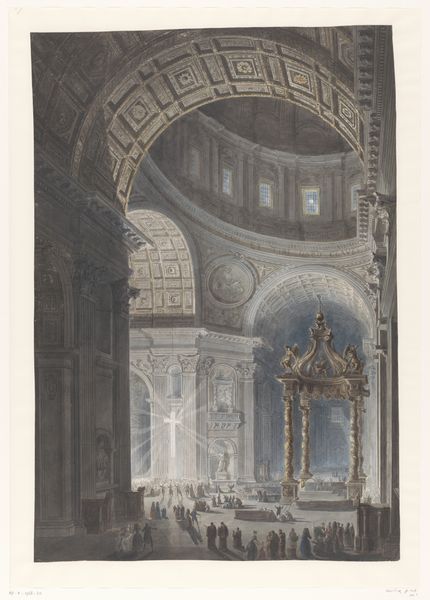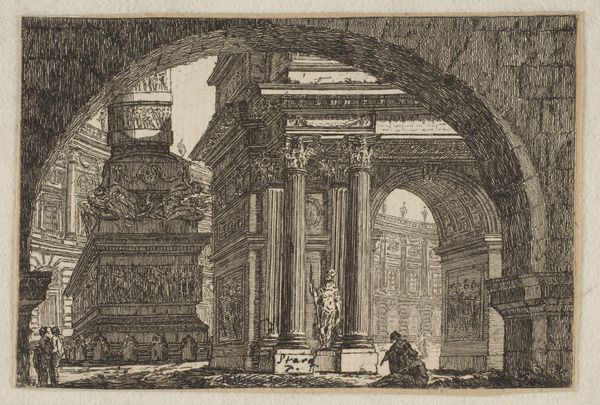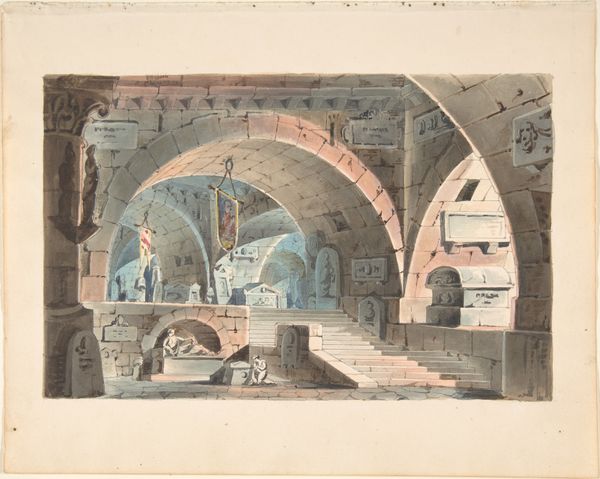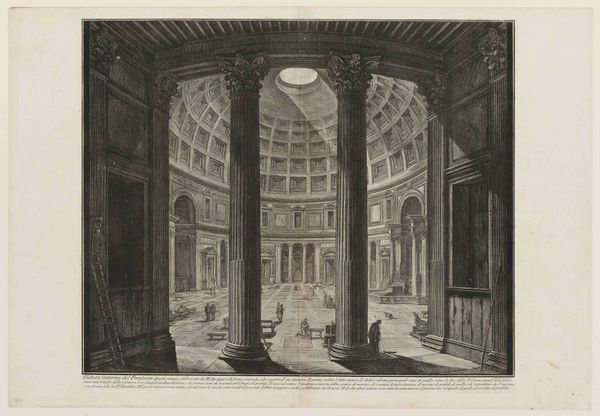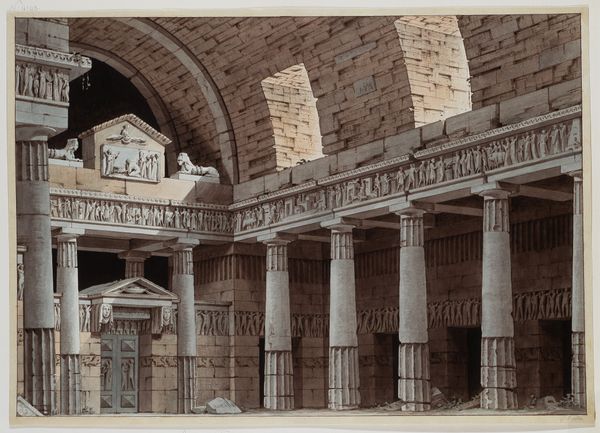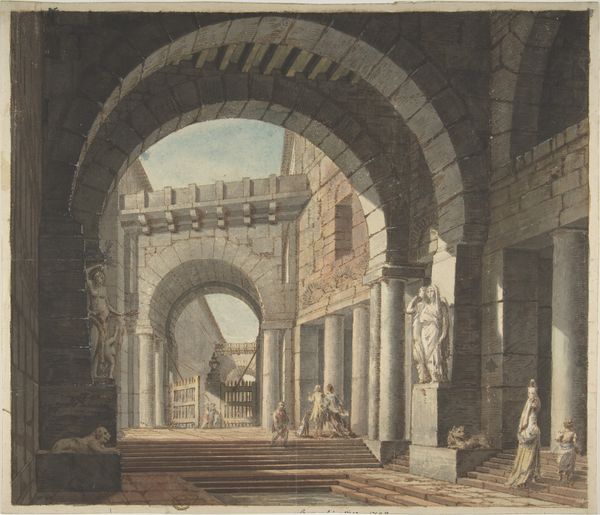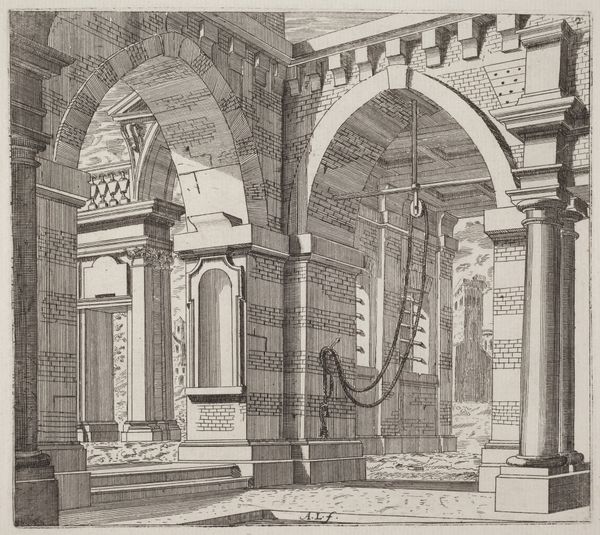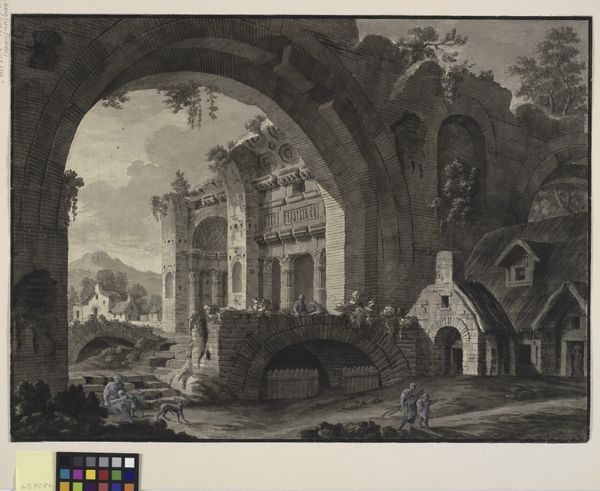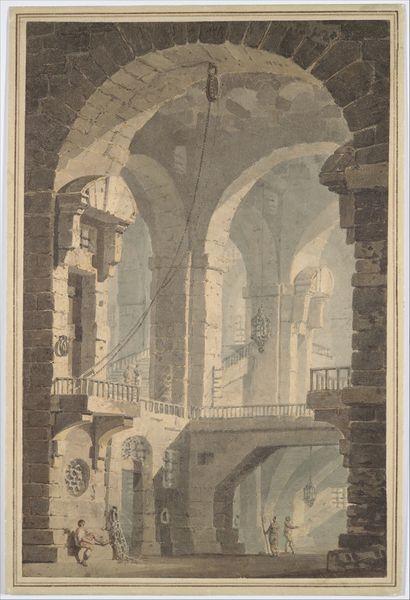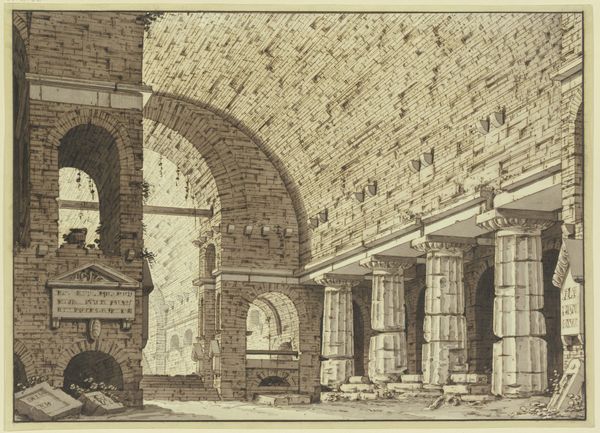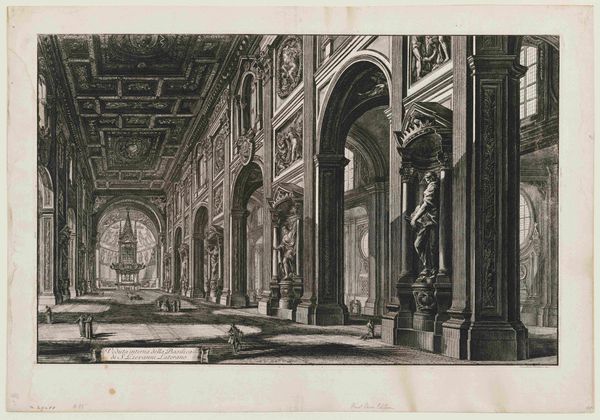
Architectural Fantasy with Roman Ruins 1730 - 1820
0:00
0:00
drawing, mixed-media, print, watercolor, architecture
#
drawing
#
neoclacissism
#
mixed-media
# print
#
landscape
#
watercolor
#
cityscape
#
history-painting
#
mixed media
#
watercolor
#
architecture
#
realism
Dimensions: 9 15/16 x 14 in. (25.3 x 35.6 cm)
Copyright: Public Domain
Curator: Here we have Charles-Louis Clérisseau’s, "Architectural Fantasy with Roman Ruins," likely created between 1730 and 1820. The mixed-media piece, incorporating watercolor and drawing elements, now resides here at the Metropolitan Museum. Editor: Whoa. First impression? Melancholy. It's a faded dream of glory. You know, that perfect ruin you see in slow-burn movies where someone wanders lost, remembering something vital, something irretrievable. Curator: The melancholic atmosphere resonates with larger questions of power and historical memory in Neoclassical art. Clérisseau situates the viewer amidst crumbling architectural grandeur, inviting reflection on empire and its inevitable decline, a very common anxiety throughout Europe. Editor: I see it. The bones of an empire, right? I love the detail, the precision he used to map out those crumbling pillars. It's so contradictory. Is it precise rendering of decay, a longing, or some kind of… judgment? I bet someone important once strolled through these arches, feeling powerful and now...well. Curator: His expert rendering of Roman ruins, though realistically depicted, served a very particular purpose within the Neoclassical movement. Clérisseau provided studies for architects, disseminating Roman motifs throughout Europe and beyond, but always imbued with the politics of their original place. Editor: I dig that tension between beauty and ruin, function and feeling. It's like a movie set for a play that's never performed, an elegy that still rings true, no? Did the folks looking at this in, say, London, understand this in the 1700s? Were they seeing something more than 'beautiful arches'? Curator: Absolutely. Remember that the Grand Tour was an established rite of passage for the wealthy and aristocratic classes. They were actively absorbing cultural knowledge. This imagery reinforced existing social hierarchies and fueled architectural and design trends for a mostly wealthy audience. The ruin wasn’t merely picturesque. It served as a moral and social text. Editor: Hmm, moral and social text. That’s good. Even for a dreamy ruin, right? Looking closer, it is like I’m walking through an echo of greatness… and I guess even echoes carry weight, reminders of both who we were, and what becomes of empires. Curator: Precisely. It pushes the boundaries of what architectural drawing could accomplish. The past always has a strong grasp on us.
Comments
No comments
Be the first to comment and join the conversation on the ultimate creative platform.
